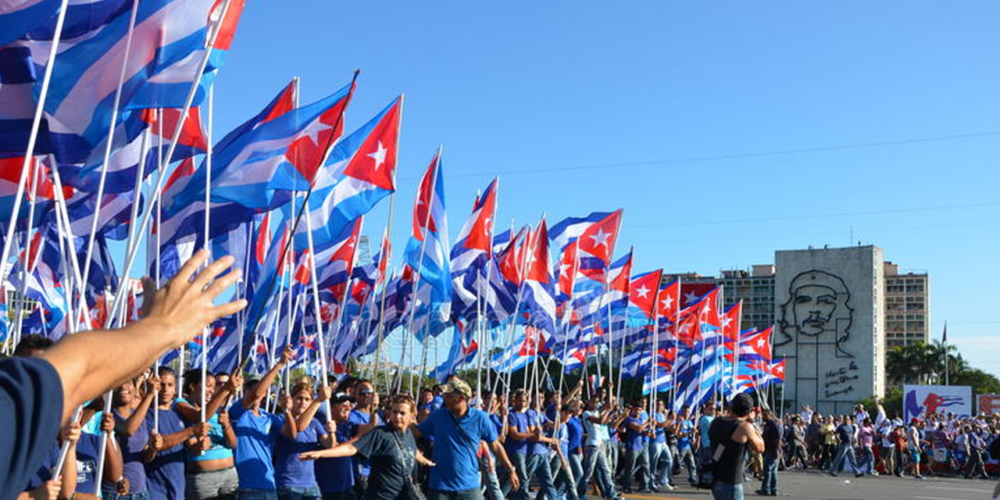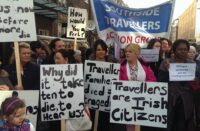Last month the 22nd International Meeting of Communist and Workers’ Parties was held in Havana. During the week, exchanges were made between 73 different communist and workers’ parties from 53 countries and a unified plan of action and resolution were agreed, including a unanimous call to action against and condemnation of the continued US blockade of Cuba.
Along with participation in this important meeting, delegates were given the opportunity to see the work of the Communist Party of Cuba in the flesh, with visits to the Centro Fidel Castro Ruz and the Centre for Genetic Engineering and Biotechnology, as well as some communities in Havana where the front-line work of the party is happening.
One of the areas where the Cuban government has been doing much work is returning to the “forgotten” parts of Havana. These are areas that have poorer-quality, older or temporary housing being used past its life span, or that have been damaged or are at risk of damage during the hurricane season. These areas often house unregistered populations that have moved in from the countryside and, because of the economic pressures brought with unexpected migration, experience higher levels of deprivation and have become a hub for vulnerable populations.
These areas in particular have been earmarked for regeneration and development—but not as we know it. “Regeneration,” as we experience it here in Ireland with the development of unaffordable luxury accommodation and the destruction of communities, is an alien approach in Cuba. For areas like La Timba it means investment in housing for the people who already live there and the improving of public utilities and services, such as schools, together with an impressive array of social work and services as well.
The gains of the Cuban health system have been covered in these pages many times; but vaccine treatment and development or their truly internationalist approach are not the only impressive features of this system. Social workers have been despatched en masse to these areas to assist in regularising people’s status, taking census, and, with community discussion, making note of what services are needed for each population group as well as ensuring that all those in need of social support, welfare payments etc. are receiving them.
Along with this very practical work one of the aims of this regeneration project is combating social isolation. The emphasis on this is part of the Cuban approach to health care—a multidisciplinary approach where a pinch of prevention is worth a pound of cure.
Multiple studies have shown that loneliness and social isolation are associated with a higher risk of health problems, such as heart disease, depression, and cognitive decline, as well as showing that people who are already ill, have a disability or are older are more likely to be socially isolated.
In tandem with the introduction and development of local health centres and community-centred primary care, it is seen as just as important with this understanding to also introduce and develop community social centres, where residents can connect with community outreach schemes, such as crafting classes, community clean-up groups, and the organising of street parties, as well being a place where people can come to get advice, resources and information on what social support they can obtain, a space in which to voice their concerns, speak to local representatives, and have a sense of collective ownership, responsibility and engagement in their area.
Another small part of this programme is the use of local small canteens where the elderly, the ill or those simply living alone can eat communally. For a tiny charge, people can get a hearty meal and the opportunity to eat with others in a relaxed and friendly environment several times a day.
Issues in the same areas with anti-social behaviour have been handled in a similar manner. For example, in La Timba a local skate park was opened that the community themselves, including those who were the intended users of the amenity—children and teenagers—helped to develop, design, decorate, and maintain.
Community consultation and input is the backbone of the success of the revolution in Cuba. It has built trust that the people and their needs are taken seriously by the government. Citizens’ involvement is sought and valued at every level of government, local and national, from the building of a skate park to the huge democratic project that was the drafting and introduction of the Family Code.
Even in the face of the continued horrendous blockade, Cuba continues to display a humanity and a social consciousness that is often absent, if not alien, in capitalist countries. Cuba isn’t perfect—it is at best idealism and at worst sabotage to think so—but Cuba is better than that, because instead of it being some fictional utopia it is a real country, with real people, implementing socialism and striving to be better.
It is our responsibility not only to defend the gains they have made but to do all we can to replicate them wherever we are.






